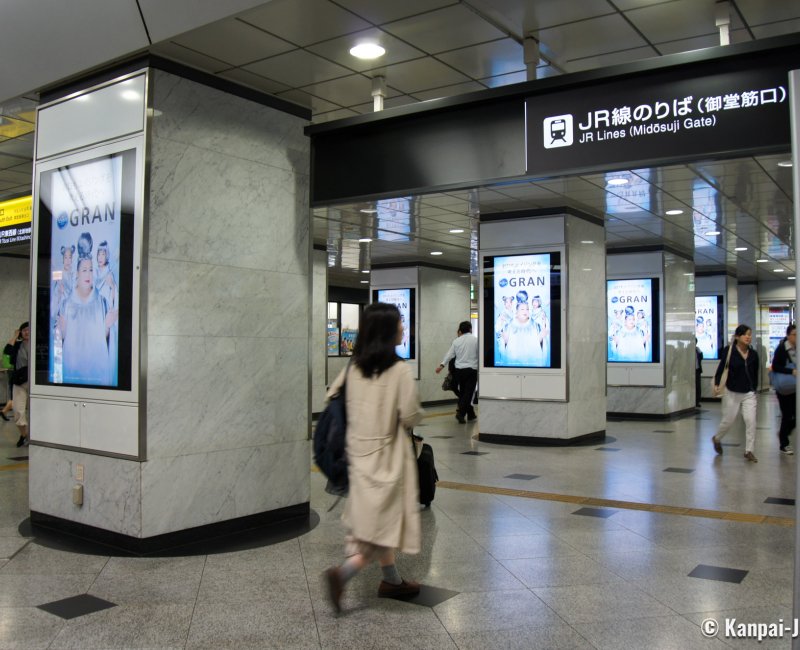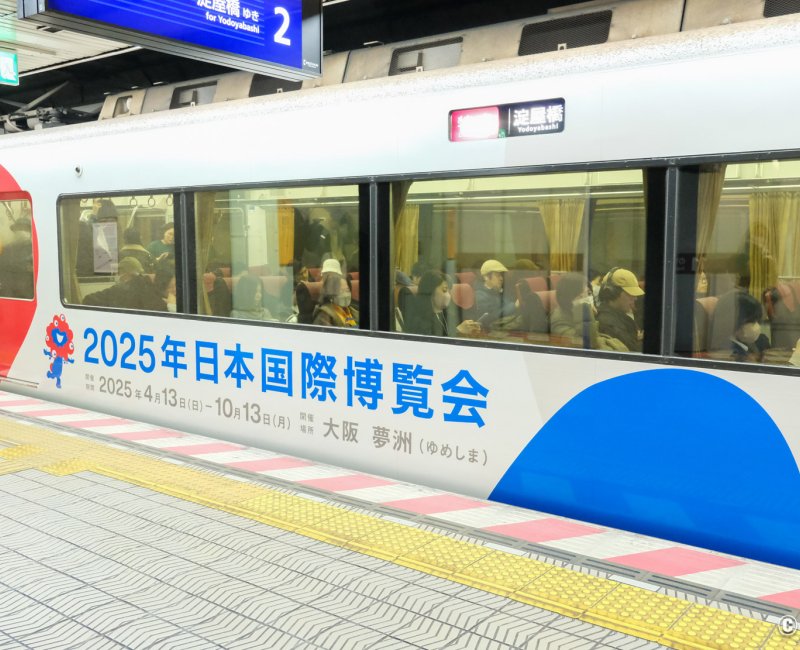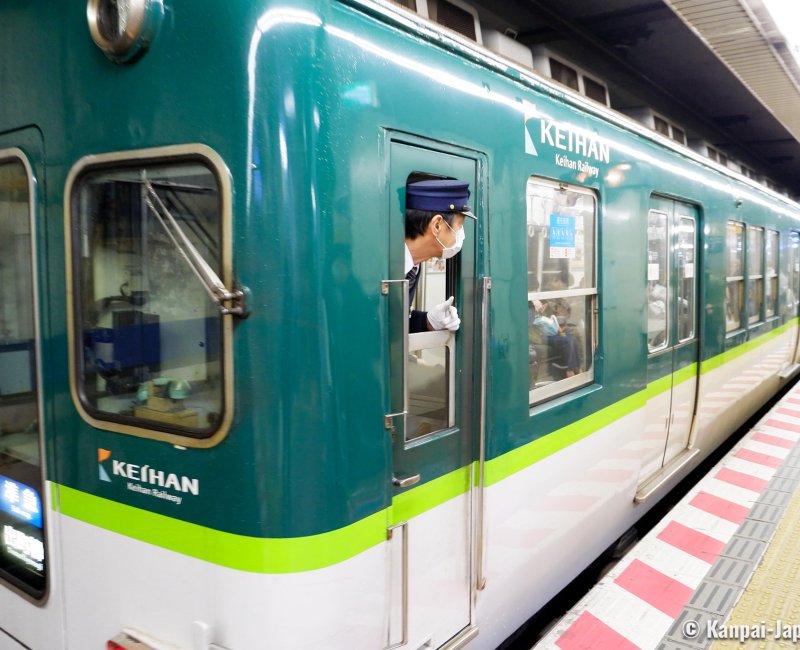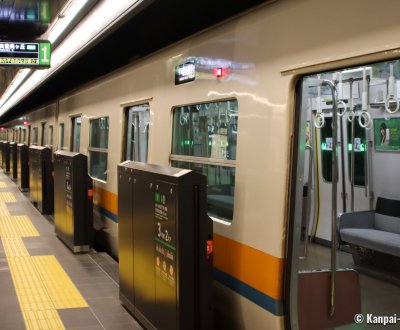Osaka Transportation Guide
Trains and Subways in Kansai’s Capital
True to Osaka’ status of Kansai area’s great economic and modern capital, public transport in the city and its surroundings is supported by a dense and efficient network, so much that renting a car 🚙 is not necessary to get around.
Trains and subways are the most used transportation means in Osaka: the JR Osaka Loop Line, that circles around the city center in the same fashion as the Yamanote in Tokyo, is completed by about 10 subway 🚇 lines. Several private train companies share the cross-regional trips around the Osaka Bay Area (Kobe, Kyoto), to the neighboring prefectures (Nara, Wakayama) and towards Kansai International Airport (KIX), the main ones being Nankai, Hankyu, Hanshin, Keihan and Kintetsu.
The picture is completed by a couple of other lines, such as the Linimo Monorail 🚝 that serves the former site of Expo ‘70 in Suita and Itami Airport in the north of Osaka, or the Hankai tramway that connects Tenno-ji to Sumiyoshi Taisha great shrine.
Below is a summary of practical information to familiarize with Osaka’s public transport network and how to move around there.

Osaka’s 4 major train stations
The train network is first and foremost sustained by 4 great railway hubs, located in the north and in the south of Osaka city-center:
- Shin-Osaka, in the north of the city, is a Shinkansen station at the crossroad of the Tokaido route (towards east and Tokyo) and Sanyo route (towards west and Hiroshima and Fukuoka). Its location slighltly away and 4km north to Osaka’s center makes it convenient and faster to reach Kyoto, Nagoya, Kobe, Himeji or Okayama.
- Osaka-Umeda is the main access hub to the city and encompasses 4 distinct railway hubs, connected together by vast shopping malls, located in the north of the city-center:
- Osaka Station, operated by JR, is convenient to go to Kyoto or ride the local JR Loop Line;
- Osaka-Umeda station is constituted by both Hankyu and Hanshin stations; and,
- Umeda subway station.
- Namba, the transportation hub in the south of the city, also encompasses several stations used by JR, Kintetsu, Hanshin, Nankai trains as well as 3 subway lines. KIX airport is served by direct trains from Namba.
- Tennoji is the other important station in the south of Osaka, operated by JR West and Osaka Metro companies. It allows to easily go to the airport, as well as to Nara and Wakayama prefectures.
Like in Tokyo, a station can be managed conjointly by several railway companies using Osaka’s train network, or can be independently established in a bigger and shared transportation hub. So finding the right station or the right platform might sometimes be confusing. However, choosing a place to stay in the vicinity of one of these great stations makes them a convenient base to visit the city and the neighboring prefectures.
Japanese train 🚅 manners usually apply to Osaka as well, with one exception: people keep right when walking. Additionally, a 2024 rule now forbids to walk in the escalators in order to limit the risk of accidental fall 🍁.

Visiting the city with the subway and the JR Loop Line
Traveling inner city, you’ll find the 9 lines operated by Osaka Metro (a private company since 2018) quite efficient, especially the following 2:
- Midosuji Line (M, red) crossing Osaka north to south. This subway line was the 1rst built in the city and remains the busiest with locals and tourists alike, as it serves Osaka’s 4 major transportation hub.
- Chuo Line (C, dark green) crossing the city east to west up to Osaka Bay. It serves Osaka Castle, and the site of Osaka 2025 Universal Expo by the newly built Yumeshima station (C09) inaugurated in January 2025.
The JR Osaka Loop Line, or 大阪環状線 Osaka Kanjo-sen in Japanese, marked in red, is operated by JR West. Comprising 19 stations, it circles around the city-center in 2 directions (inner loop and outer loop), with stops at Umeda in the north, Kyobashi in the east and Tennoji in the south.
Moreover, the Loop Line is also connected to:
- The Yumesaki / Sakurajima Line (dark blue) by Nishikujo station, that serves Universal Studios Japan; and to
- The Yamatoji Line, by the Tennoji, Shin-Imamiya and Imamiya stations. Also, the Yamatoji line’s terminus is in Namba, one station away.
Fares, cards and passes
Tourists in Osaka will find it very easy to use a prepaid IC card such as Icoca or Suica in their visit of the city. This payment card is indeed a travel ticket that can be used in all of Osaka’s public transport network (subway, train, bus, tramway) regardless of the company.
Fares vary according to the traveled distance. For example, a trip on Osaka’s subway can cost from ¥190 (~US$1.22) to ¥390 (~US$2.50) per adult, and between ¥100 (~US$0.64) and ¥200 (~US$1.28) per child, depending on the distance traveled.
Moreover, most of the JR Lines in Osaka city-center and around are covered by the nationwide Japan Rail Pass, and its Kansai Area Passes regional counterparts.

Various railway companies to further explore
At a regional scale, Kansai’s economic capital can be used as a base to travel to other cities in the neighboring prefectures.
The regional network includes the JR and Shinkansen lines, as well as several local private rail companies that each manage their own specific destinations, as such:
- Nankai Electric Railway has the fastest and most direct connection from Namba (in the south of Osaka) to Kansai International Airport thanks to its Rapi:t train. Its 2 main touristic lines serve Mount Koya and Wakayama city.
- Keihan Electric Railway is a regional company, whose main line has been running between Osaka (Yodoyabashi) and Kyoto (Demachiyanagi) since the early 20th century. It doesn’t own its own stations in Osaka and uses the subway tracks for its routes. Other Keihan lines also serve Uji and Otsu in Shiga prefecture, without running through Osaka.
- Hankyu Railway's network extends to the north and to the west of Osaka, to Kobe (and specifically Mount Rokko), Takarazuka and Kyoto (including Arashiyama).
- Hanshin Electric Railway connects Kobe to Osaka by a northern route going through Umeda and by a southern route going through Namba. Furthermore, its main line interconnects with the Sanyo Electric Railway that serves Himeji.
- Kintetsu Railway is used by tourists based in Osaka to reach several major tourist destination located in the east of the city, such as Nara, Ise-Shima Peninsula and Mount Yoshino. Most of its trains depart from Osaka-Abenobashi station, located at the foot of the Abeno Harukas tower and facing Tennoji Station in the south of the city. The company also operates several scenic trains.
Fares, cards and passes
Each railway company has its own set of discounts, available as 1-day or several days passes, one-route tickets or combined tickets that are better suited to people living here (commuters and students) rather than to travelers who will only visit Osaka and Kansai’s main touristic sites once.
Therefore, we recommend using an IC card like Suica or Icoca to pay for the train, in the same manner as the subway in the city-center. Note however that some regional rapid trains have cars requiring a seat reservation: when boarding such trains, make sure to use the non-reserved seats cars.






